A scarf is a way of joining two planks end-to-end. It is used when planking a guideboat because it is impossible to find, much less fit, stock that would span the entire length of the guideboat hull. To make life easier, we span the hull using two planks joined using a scarf.
There are certain rules governing a scarf. I didn’t know all of them when I built my first guideboat. The one I missed was that a scarf should land on a rib. Mine were located between ribs. No matter, it hasn’t affected the boat functionally. It is now twenty years old and you wouldn’t know any difference unless I pointed it out to you. The advantage of having a scarf land on a rib is that it is hidden from view on the inside of the hull.
Another rule is that the scarfs should be staggered so as not to fall on the same rib time after time. Masons use the same rule when laying bricks. The photo below shows staggering of the scarfs on my latest boat. The scarfs are indicated by the line of tacks.
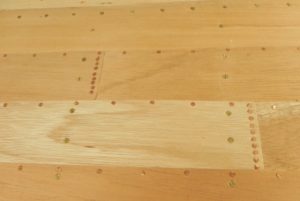
You must take great care when laying out a scarf. The two planks to be joined are assigned an upside and a downside. You must make sure the downsidc spans the rib as shown below.
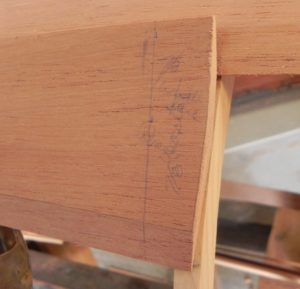
Then the upside plank is set on top of the downside one and the scarf width marked on it.
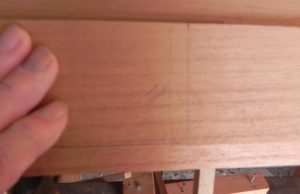
Waste is removed from the top of the downside plank to accommodate the overlapping upside plank. My plank scarfs span a width of 7/8″. That generally falls within the rule of thumb that the scarf width should be six times the thickness of the stock.
To remove the waste I start with a chisel.
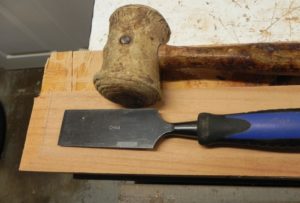
\
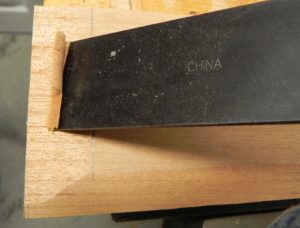
Then I use a block plane. This gives a flat mating surface.
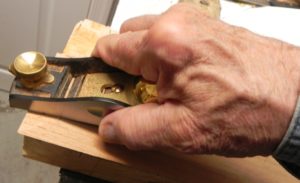
Finally I finish with a sanding board.
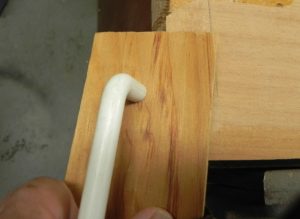
I repeat the process on the upside plank by removing material from its underside. The two planks are then temporarily fastened to the hull and the fit checked. Once everything looks OK the planks can be permanently hung. The downside plank goes on first. The scarf is sealed using a row of closely spaced tacks along the edge ( see the first figure ).